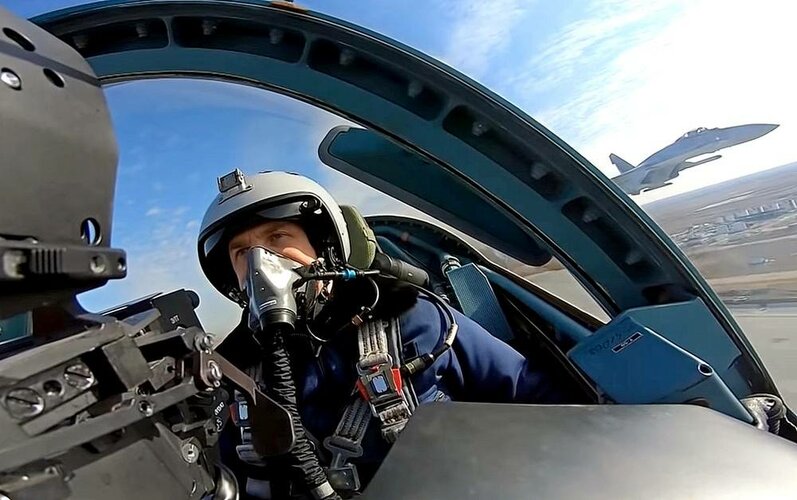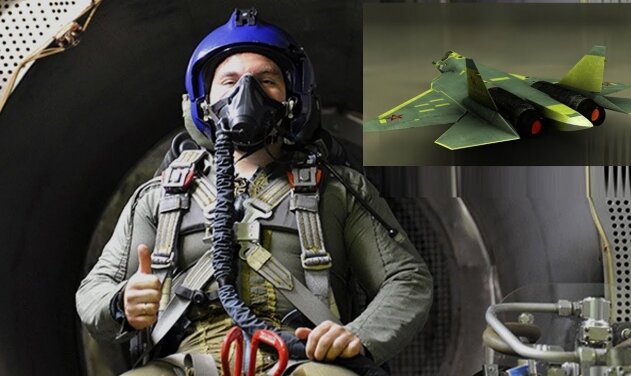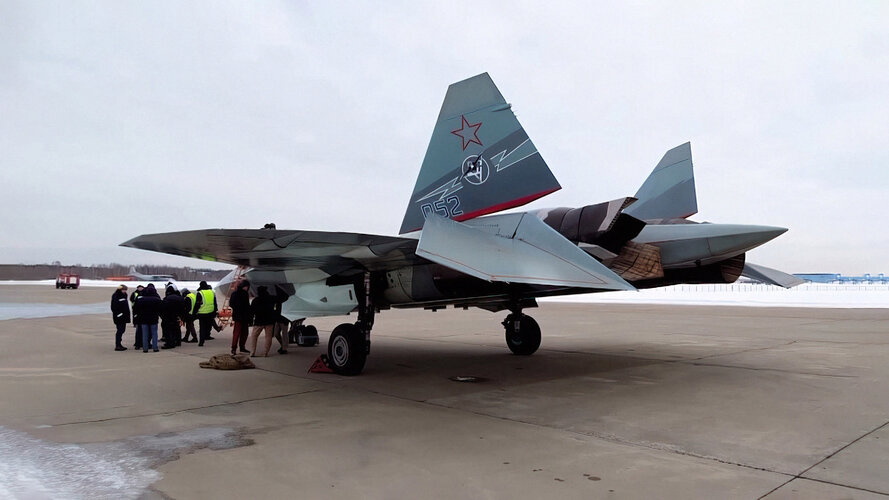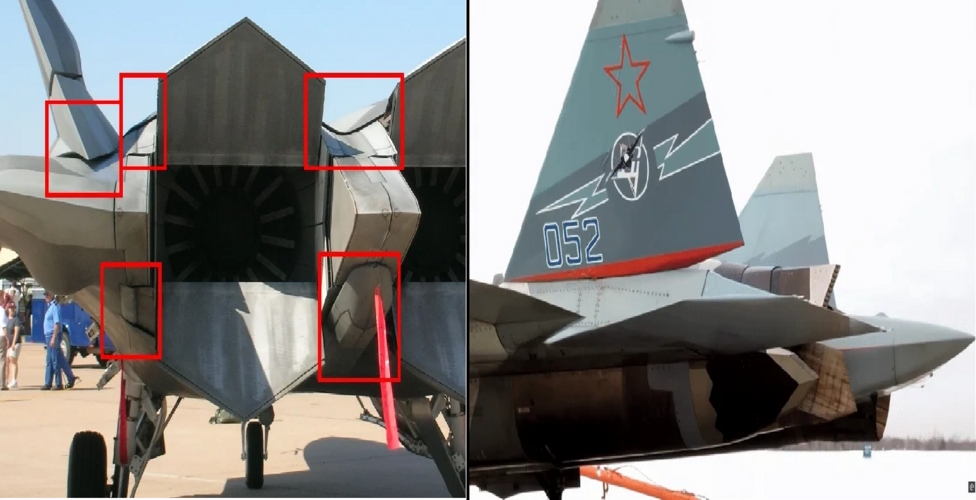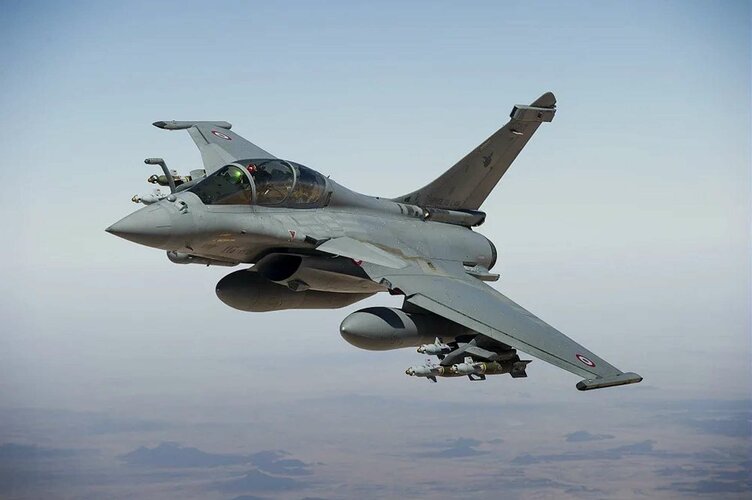You are using an out of date browser. It may not display this or other websites correctly.
You should upgrade or use an alternative browser.
You should upgrade or use an alternative browser.
Sukhoi Su-57 flight testing, development & operations [2012-current]
- Joined
- 15 January 2021
- Messages
- 370
- Reaction score
- 1,312
Those photos do show the nozzle full open at ground idle. They are not that open even in full AB (where the thermal image is highly visible), and are much further closed at Mil and below. And there is no vectoring at mid to high airspeeds, making the nozzle virtually invisible to radar in the aft sector.Even the slightest movement of the horizontal stabilizer causes the nozzles to move, and even if they move just a little the side wall of the nozzle is visible and if its visible to a camera it’s visible to a radar
donnage99
ACCESS: Top Secret
- Joined
- 16 June 2008
- Messages
- 1,312
- Reaction score
- 720
At close range, the RCS is large enough for a missile lock regardless (though pilots testimonies in the past have indicated that some 4th gen fighters couldn't even get a lock in visual range against f-22 but most likely very narrow range of angles) and most likely it's IR seeker you're worrying about more. Regardless I don't think it was a design requirement to be RCS stealthy in visual range dogfight.A stealth aircraft will always have a BVR advantage but dog fights will always exists, even during the Gulf war there were a lot of dog fights were Iraqis surprised NATO fighters
Here is a Rafale and F-22 during exercises. The Rafale indeed had the F-22 at very similar angles
View: https://youtu.be/KOswfrc7Xtg
The nozzle flaps actually move very little in regards to how the thrust vectoring is engaged in any scenario outside of close-in dogfight and airshow flight demos, mainly to limit flight control surfaces' movements and trim drags at certain speed so I don't think that side would ever be exposed. Testing probably led them to believe such scenario where RCS is relevant and the side of the flap exposed is so unrealistic they could do away to save weight.
QuadroFX
Russia, Chelyabinsk
Very strange and obviously incorrect title:
''In the Su-57 and the Su-35, the AL-41F-1 features a thrust-vectoring nozzle of axisymmetric type. This is also known as three-dimensional thrust vectoring and provides pitch, yaw, and roll control.
In its initial form, the AL-51F-1 also retains a similar three-dimensional thrust vectoring nozzle, but what we see in the new imagery is an alternative nozzle, this time of the two-dimensional type, which provides pitch control as well as limited roll control if engaged asymmetrically. It isn’t clear if the angled installation of the nozzle is meant to provide extra control in the latter.''

 www.twz.com
www.twz.com
As M. Strelets said it is a 3D TVC nozzle. Maybe the author did not know that nozzles can rotate in a longitudinal axis?
View: https://x.com/Fighterman_FFRC/status/1868421610388246553
On the other side this was one very clever thinking from 2017 ( translated):
''The feasibility of using flat nozzles in the PAK FA program. I assume that theoretically it is possible to get rid of the problem of non-all-aspect deviation of the thrust vector by integrating a motor nozzle into the design, which allows you to rotate the deflected plane around the engine( longitudinal) axis.''
 vk.com
vk.com

Su-57 Felon’s Two-Dimensional Thrust-Vectoring Engine Nozzle Breaks Cover
''In the Su-57 and the Su-35, the AL-41F-1 features a thrust-vectoring nozzle of axisymmetric type. This is also known as three-dimensional thrust vectoring and provides pitch, yaw, and roll control.
In its initial form, the AL-51F-1 also retains a similar three-dimensional thrust vectoring nozzle, but what we see in the new imagery is an alternative nozzle, this time of the two-dimensional type, which provides pitch control as well as limited roll control if engaged asymmetrically. It isn’t clear if the angled installation of the nozzle is meant to provide extra control in the latter.''

Su-57 Felon’s Two-Dimensional Thrust-Vectoring Engine Nozzle Breaks Cover
The flattened exhaust nozzle installed at an angle is planned to reduce the signature of advanced versions of the Su-57. The novel flattened exhaust nozzle is planned to reduce the radar signature of advanced versions of the Su-57 Felon fighter.
As M. Strelets said it is a 3D TVC nozzle. Maybe the author did not know that nozzles can rotate in a longitudinal axis?
View: https://x.com/Fighterman_FFRC/status/1868421610388246553
On the other side this was one very clever thinking from 2017 ( translated):
''The feasibility of using flat nozzles in the PAK FA program. I assume that theoretically it is possible to get rid of the problem of non-all-aspect deviation of the thrust vector by integrating a motor nozzle into the design, which allows you to rotate the deflected plane around the engine( longitudinal) axis.''
VK.com | VK
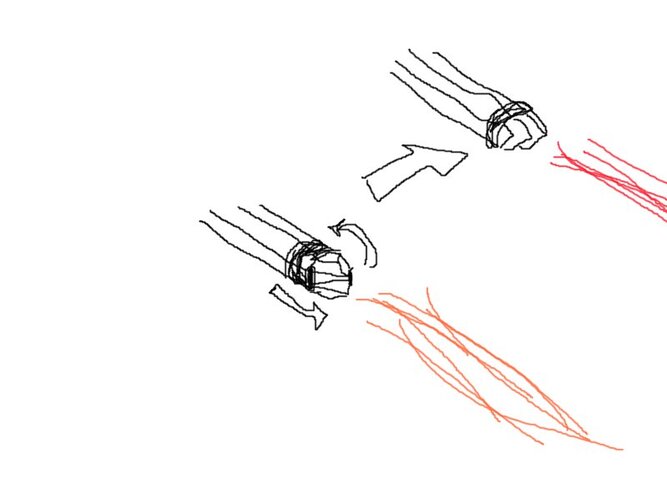
Last edited:
Willythekid
I really should change my personal text
Would be interesting to know how much reduction in radar and heat signature these type of exhaust produce
Both significantly when compared to the standard engines but of course it’s impossible to know since Sukhoi/Saturn are not providing data. Studies however, have shown up to a 20% reduction in heat but it looks like Saturn also added something that looks like cooling veins.
As for RCS, main thing is that the leading edge and base of the nozzles are shaped so as to scatter radar as apposed to the older design that would cause radar to bounce back in a perpendicular manner, so by shaping the nozzles the radar or electro magnetic energy is diffracted away, this should reduce the RCS significantly and from both the front as well as the back of the aircraft. The nozzles are also canted/flat as opposed to cylindrical which will also reduce RCS from the sides.
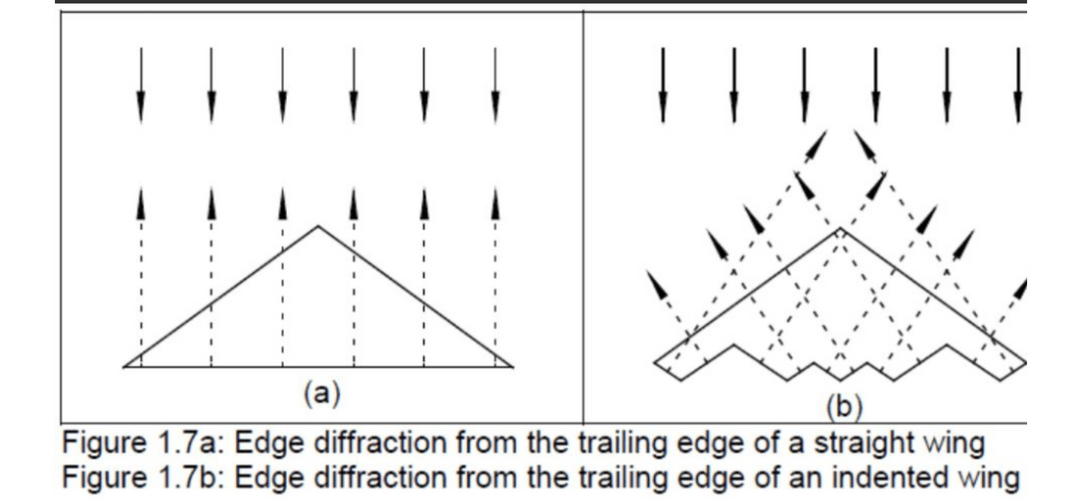
Null
ACCESS: Restricted
- Joined
- 16 December 2024
- Messages
- 22
- Reaction score
- 42
@paralay @QuadroFX I took an interest in this forum through taking an interest in your forum. Considering Russia is your home country do you have more information on their electronic production like how much of these circuits they will produce?

 iz.ru
iz.ru

 sdelanounas.ru
The production for the circuits started a month ago, do they usually prioritize circuits for radars on military equipment like ground radars and aircrafts over civilian related shit?
sdelanounas.ru
The production for the circuits started a month ago, do they usually prioritize circuits for radars on military equipment like ground radars and aircrafts over civilian related shit?

Находка для фотона: в РФ начнут производить приборы связи нового поколения
Как эти устройства помогут развернуть сети 5G и установить квантовые коммуникации
]In Russia, the production of unique communication equipment operating on photonic integrated circuits is launched. This is a new type of microelectronics, the speed of which is much higher than that of traditional silicon chips. It opens up good prospects for the creation of devices that are necessary, in particular, for the development of telecommunications networks, for example, 5G base stations and subsequent generations, known as pervasive networks. The development will also help establish quantum communications, experts believe.
Radio Electronics of the New Generation
St. Petersburg Electrotechnical University "LETI" and the Element Group of Companies have announced the launch of production of ultra-high frequency (microwave) generators with unique characteristics based on new elements - photonic integrated circuits (FIS).
The speed of photons in such FIS is equal to the speed of propagation of an electromagnetic wave in the material, in fact, this is the speed of light, the developers said. Therefore, the speed of action, and hence the frequency ranges of such integrated circuits, are much higher than those of electronic ones. At the same time, the requirements for topological standards in production are much lower than in silicon electronics, which makes it possible to obtain a high percentage of yield of suitable crystals at the stage of industrial development of the technology, LETI noted.
"Radiophotonic devices allow you to work with ultra-wideband signals, which provides high speeds and large amounts of transmitted information. This is in demand in promising telecommunication systems, quantum communication systems. In addition to microwave signal generators, we are developing photonic integrated circuits, signal spectrum analyzers, analog-to-digital converters, signal processors," Viktor Tupik, Vice-Rector for Strategic Development of ETU "LETI", told Izvestia.
As the developers explained, the launch of industrial production of radio-electronic products using the principles of photonics opens up good prospects for the creation of new devices. In particular, those necessary for the development of telecommunications networks, for example, 5G base stations and subsequent ones, known as pervasive networks. They will also be in demand for the modernization of system devices in radar, radio navigation and other areas.
As Viktor Tupik explained, combining radio frequency and optical signals in one system makes it possible to detect what cannot be recorded in each range separately.
"Photonic and electronic integrated circuits have a common advantage - they are manufactured using integral, in other words, group technology. That is, not one circuit is processed in one operation, but dozens, hundreds or thousands of chip crystals, their number depends on the size of the single-crystal substrate," the expert said. "Their differences are in the physics of the processes on the basis of which information processing is built.
The line of the first devices will be supplemented with the latest products, including domestic developments of components for quantum communications, such as random signal generators, spectrum analyzers, and others.
Digital technologies Science 5G Nanotechnology Quantum Technologies
Highlight highlights Off
In Russia, the production of unique communication equipment operating on photonic integrated circuits is launched. This is a new type of microelectronics, the speed of which is much higher than that of traditional silicon chips. It opens up good prospects for the creation of devices that are necessary, in particular, for the development of telecommunications networks, for example, 5G base stations and subsequent generations, known as pervasive networks. The development will also help establish quantum communications, experts believe.
Ultra-high-frequency generators based on FIS open up great opportunities for ultra-wideband communication systems, such as future 5G/6G networks and quantum communications, said Vyacheslav Begishev, associate professor of the Department of Probability Theory and Cybersecurity of the Institute of Computer Science and Telecommunications of the RUDN University.
"The production of such devices in Russia will reduce dependence on foreign technologies and create domestic components for 5G/6G networks and more advanced communication systems. The introduction of the FIS will make it possible to increase the production of high-tech products based on domestic production facilities," the specialist said.
Currently, the global market for integrated photonics for use in promising telecommunications systems and quantum communications systems is about $10 billion, while Russia's share in it is only about 2%, according to LETI. His work is mainly focused on the search for technological possibilities for combining microelectronic silicon technology and photonic technologies.

В «НИИИС им. Ю.Е. Седакова» изготовлены фотонные интегральные схемы по топологии 90 нм и 350 нм
importfree.cnews.ruВ «НИИИС им. Ю.Е. Седакова» произвели фотонные интегральные схемы по топологии 90 и 350 нанометров. Они нужны для создания оптических квантовых и нейроморфных процессоров, необходимых для ускорения систем...
It appears I was mistaken, I thought that it was a dropdown eyepiece from it's design, I didn't expect such compactness from a projection system using the the actual pilot face shield. Now that I've zoomed in fully, I do see the sunvisor over the faceshield.That's my point. It's working for both eyes.
View attachment 752616
Actually it's like an EF-2000 helmet:
View attachment 752617
That's my point. It's working for both eyes.
View attachment 752616
Actually it's like an EF-2000 helmet:
View attachment 752617
This makes sense now, I didn’t notice the middle reflective mirror. Like everyone else at first I thought the piece of hexagonal glass was to look through but the angle coincided with how it would reflect onto the visor. I then questioned why use clear glass but then upon further research coated glass can reflect but also prevent excessive glare like you would get with a traditional mirror.
The concept does look the same to the Striker II where they use more efficient mirror projectors to display the image, where as the Striker I used ray projectors that consumed a lot of power, several thousand volts apparently.
what's the deal with all the triangular extrusions on the top of the helmet?Nice view of the AR coating on the visor View attachment 752698
what's the deal with all the triangular extrusions on the top of the helmet?
Probably a similar function to the Striker helmet sensors:
“The bumps (infra-red LED’s) are used to calculate the pilot’s head position and its angle. The LEDs on the helmet flash and the 3 sensors in the cockpit detect the flashing. The data is then used to calculate where the pilot is looking. As the pilot turns his head, the system continually re-configures to use the best sensor and LED combination to give the most accurate result. Accurate targeting is immediate; there’s no delay”
yeetmahboi
ACCESS: Secret
- Joined
- 6 April 2022
- Messages
- 342
- Reaction score
- 363
And how much reduction in thrust as well...Would be interesting to know how much reduction in radar and heat signature these type of exhaust produce
Null
ACCESS: Restricted
- Joined
- 16 December 2024
- Messages
- 22
- Reaction score
- 42

Модернизация Су-57 – трёхкоординатное плоское сопло и система нашлемного целеуказания » Авиация России
Двигатель второго этапа с плоским соплом и управляемым вектором тяги для истребителя Су-57, известный под обозначением «изделие 30» или АЛ-51Ф1, проходит
 aviation21.ru
aviation21.ru
Su-57 modernization – three-coordinate flat nozzle and helmet-mounted target designation system, 12.17.2024.
The second stage engine with a flat nozzle and controlled thrust vector for the Su-57 fighter, known under the designation "product 30" or AL-51F1, is undergoing flight tests on an experimental aircraft with the tail number 052 (PAK FA T-50-2). At the same time, the second engine with an axisymmetric round nozzle remains the standard one - AL-41F1. This is described and shown in documentary film Channel One's "Lords of the Sky", dedicated to the 85th anniversary of the Pavel Sukhoi Experimental Design Bureau.
The engineering approach to the Su-57 involves the modularity of its design, which allows for the prompt replacement of various components, including the power plant. As noted by Mikhail Strelets, Director of the Sukhoi Design Bureau and Chief Designer of the Su-57, in the future, combat aircraft with first-stage engines installed may be equipped with a new engine with a flat nozzle, which will significantly improve their combat performance and reduce the fighter's visibility in the rear hemisphere.
The flat nozzle is a complex metal-composite structure. Unlike traditional axisymmetric nozzles, the flat nozzle is used on the aircraft to create new capabilities, including providing low visibility in the radar range due to the characteristic shape of the nozzle flaps, and allows it to be used in a wide range of altitudes and flight speeds. Due to this, the aircraft retains all its maneuverability.
"In essence, the flat nozzle complements the existing aerodynamic controls, allowing the creation of moments in three planes and thus - pitch, roll and yaw control. And since the nozzle installation angle remains axisymmetric, all the aircraft's super-maneuverability capabilities are also preserved," explained Mikhail Strelets.
One of the key advantages of the flat nozzle is that it reduces the aircraft's visibility in the infrared range as well. The flat nozzle narrows the high-temperature exhaust stream, reducing the Su-57's thermal signature, making it less vulnerable to missiles with infrared homing heads.
On the foreign market, the American F-22 fighter has similar solutions. However, its flat nozzles can only deflect in the vertical plane, which limits its maneuverability compared to the Su-57.
In the USSR, a flat two-coordinate nozzle was designed in the second half of the 1970s for the Yak-41 carrier-based vertical takeoff and landing (VTOL) fighter. An original solution was used to rotate it: the nozzle was divided into three segments, which, rotating in opposite directions relative to each other, provided a thrust vector deviation in the vertical plane up to an angle of 95° (with VTOL). To perform a short takeoff, the nozzle was set to a position of 62°. This solution made it possible to use afterburner both in horizontal flight and in vertical mode.
In addition to upgrading the Su-57 with the second-stage engine, Sukhoi Design Bureau is working on improving the information display system. Data from the onboard computer will be displayed not only on the cockpit displays, but also on the visor of the flight helmet. The helmet is equipped with an optical-electronic positioning system and a video information display system. The image is displayed on the protective shield.
Such a helmet replaces several devices at once and is equipped with a large number of sensors. They detect the movements of the pilot's head and, depending on where he turns his head, project the information he needs at the moment onto the shield, for example, the function of selecting and capturing a target. The helmet-mounted target designation system is being developed specifically for the Su-57 and will allow the pilot to receive information about the aircraft's condition, combat situation, speed, flight altitude and distance to the target.
According to Dmitry Korzinin, head of the optical-electronic systems department at the Sukhoi Design Bureau, if a missile with an infrared homing head has acquired a target, the pilot's helmet shield will change the aiming marker. He will know that the target has been acquired and will then see whether the launch is permitted or not. The direction in which the pilot looks is in which direction the missile's homing head will deviate. The helmet with the target designation system is currently undergoing flight tests.
"We view the aircraft as a platform that can effectively solve its problems for at least 50 years. Including the gradual introduction of next-generation technologies, essentially transforming the aircraft from generation 5 to 5 plus. This is the generation in which individual sixth-generation technologies are already being introduced," added Mikhail Strelets.
- Joined
- 24 November 2008
- Messages
- 1,474
- Reaction score
- 2,208

Модернизация Су-57 – трёхкоординатное плоское сопло и система нашлемного целеуказания » Авиация России
Двигатель второго этапа с плоским соплом и управляемым вектором тяги для истребителя Су-57, известный под обозначением «изделие 30» или АЛ-51Ф1, проходитaviation21.ru
I'm confused. Does it mean the whole flat nozzle moves up/down and left/right?!..."In essence, the flat nozzle complements the existing aerodynamic controls, allowing the creation of moments in three planes and thus - pitch, roll and yaw control. And since the nozzle installation angle remains axisymmetric, all the aircraft's super-maneuverability capabilities are also preserved," explained Mikhail Strelets.

I always assumed pitch, roll and yaw control is achieved by canted installation of the two 2D nozzles... Kind of how a V-tail works.
By the way, the latest published information about the PAK FA program suggests an interesting development not only of the Su-57 itself, but also of other programs such as LTS, PAK DA and in the future, perhaps PAK DP or PMKI, if the issue of a new aircraft carrier is finally resolved (the fall of Syria may fundamentally change the position on this issue).
- Joined
- 1 April 2006
- Messages
- 11,216
- Reaction score
- 9,276
it was said before that documentary animations are bs. Aviation21.Ru article is from the same categoryI'm confused. Does it mean the whole flat nozzle moves up/down and left/right?!...
- Joined
- 24 November 2008
- Messages
- 1,474
- Reaction score
- 2,208
Thx for clarification!it was said before that documentary animations are bs. Aviation21.Ru article is from the same category
Avimimus
ACCESS: Top Secret
- Joined
- 15 December 2007
- Messages
- 2,362
- Reaction score
- 788
The big blocky pixels just look bad, especially around the cockpit. It really just breaks up and distracts from the shape and curves of the aircraft. It’s like a makeup artist hiding the true shape of a face.
I think you just described disruptive camouflage...
I think you just described disruptive camouflage...
It’s not like that camouflage does anything to make the aircraft more difficult to see, it just distracts from the elagant lines of the aircraft. Light grey aircraft are always more difficult to see as opposed to dark grey hense why 95% of all aircraft are light grey, while Sukhoi uses large blocky dark grey patterns and fugly ones at that. Like I said it’s a waste of time, money and resources and the end result = rice/crap.
No one besides some ricer kids would put silly decals, stickers or strange paints schemes on their cars. Yet when it’s done to aircraft some people applaud it. It’s a piece of military equipment not some graffiti wall.
This is what the aircraft should look like, clean, professional, efficient and sexy especially with the new nozzles, end of rant:

I strongly disagree with you, sukhoi He perfectly understands how to make camouflage on airplanes and uses it on all his planes. Here is an exampleIt’s not like that camouflage does anything to make the aircraft more difficult to see, it just distracts from the elagant lines of the aircraft. Light grey aircraft are always more difficult to see as opposed to dark grey hense why 95% of all aircraft are light grey, while Sukhoi uses large blocky dark grey patterns and fugly ones at that. Like I said it’s a waste of time, money and resources and the end result = rice/crap.
No one besides some ricer kids would put silly decals, stickers or strange paints schemes on their cars. Yet when it’s done to aircraft some people applaud it. It’s a piece of military equipment not some graffiti wall.
This is what the aircraft should look like, clean, professional, efficient and sexy especially with the new nozzles, end of rant:
View attachment 752779
Willythekid
I really should change my personal text
I strongly disagree with you, sukhoi He perfectly understands how to make camouflage on airplanes and uses it on all his planes. Here is an exampleView: https://youtu.be/YcAHH9OJUDs
Gloss black, bright green and bright white is an effective camouflage? Or bright white and grey like on SU-24s? Sukhoi might as well put a disco ball on their aircraft and paint them pink. I have seen Sukhois in real life and I have seen F-15s, Mirages, F-16s, F-18s, ect Russian aircraft are much easier to see. I have also always been into art so I understand perfectly well how colors work against backgrounds.
Which one of these two aircraft blend in better with the sky, the bright green/white/black SU-34 or the grey Rafale. Sukhoi does NOT use naturally occurring colors for their paint schemes nor does Sukhoi use any soft blending or natural texturing. Every one of Sukhois paint schemes (besides the SU-30SM) uses bright, glossy, not naturally occurring colors with rough edges and too much contrast.
Attachments
Supposedly the Su-57's IMA BK main multiprocessor computer, and the advanced HUD for the Su-57E:
View attachment 752802
Detail of the new stealth nozzle:
View attachment 752803
I find it strange Sukhoi is still using a HUD when they have apparently build a HUD into the visor of the helmet. I understand the need of a HUD on prototype aircraft and the serial models when the helmet is still in development but it would be strange if they keep the HUD after the helmet is ready. Seems like it would be very confusing and messy for the pilot when two HUDs are overlapping plus the cost and weight is unnecessary. Plus removing the HUD gives a better field of view as it takes up a lot of cockpit real estate.
- Joined
- 1 April 2006
- Messages
- 11,216
- Reaction score
- 9,276
Do you know the story behind eggplant camo and who proposed it, to start with? I believe you don't.Gloss black, bright green and bright white is an effective camouflage? Or bright white and grey like on SU-24s? Sukhoi might as well put a disco ball on their aircraft and paint them pink.
- Joined
- 1 April 2006
- Messages
- 11,216
- Reaction score
- 9,276
Self-explaining.I don’t care about history of any camo, that is completely irrelevant nor do I care about outdated and flawed studies.
In his 63rd, he managed to withstand 9G for 20 sec. Man hard like a rock.
''Bogdan Sergey Leonidovich. Honored Test Pilot of the Russian Federation, Reserve Colonel, Hero of Russia (2011). Since 2000 - Head of the Flight Service of the Sukhoi Design Bureau. Born in 1962 in the city of Volsk, Saratov region. He served in a number of regions of Russia, in Mongolia, and took part in the operation in Syria.He likes to joke that he has been afraid of heights since childhood. Regularly goes to the fitness club, swimming pool and gym. Plays hockey and football. Climbed on Elbrus.''

''Bogdan Sergey Leonidovich. Honored Test Pilot of the Russian Federation, Reserve Colonel, Hero of Russia (2011). Since 2000 - Head of the Flight Service of the Sukhoi Design Bureau. Born in 1962 in the city of Volsk, Saratov region. He served in a number of regions of Russia, in Mongolia, and took part in the operation in Syria.He likes to joke that he has been afraid of heights since childhood. Regularly goes to the fitness club, swimming pool and gym. Plays hockey and football. Climbed on Elbrus.''
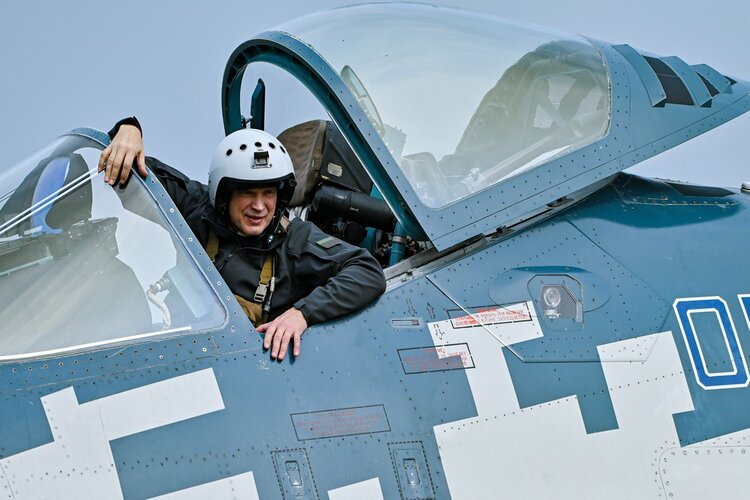
Eh, I think these AR helmets are a sidegrade (or even downgrade) compared to regular HUDs and 2D screens. I used to work developing software for radiologists, and a couple of years ago everybody was saying 3D and AR/VR is the future, and nobody is going to stare at traditional sliced MR images, everybody is going to view these 3D scans as 3D reconstructions through AR glasses.I find it strange Sukhoi is still using a HUD when they have apparently build a HUD into the visor of the helmet. I understand the need of a HUD on prototype aircraft and the serial models when the helmet is still in development but it would be strange if they keep the HUD after the helmet is ready. Seems like it would be very confusing and messy for the pilot when two HUDs are overlapping plus the cost and weight is unnecessary. Plus removing the HUD gives a better field of view as it takes up a lot of cockpit real estate.
Guess what?
Other than an enthusiastic minority, doctors saw no point in this and continued to look at cross-sectional slices through boring old 2D monitors.
Eh, I think these AR helmets are a sidegrade (or even downgrade) compared to regular HUDs and 2D screens. I used to work developing software for radiologists, and a couple of years ago everybody was saying 3D and AR/VR is the future, and nobody is going to stare at traditional sliced MR images, everybody is going to view these 3D scans as 3D reconstructions through AR glasses.
Guess what?
Other than an enthusiastic minority, doctors saw no point in this and continued to look at cross-sectional slices through boring old 2D monitors.
Those helmets provide quicker data, better field of view, and new capabilities such as visualization of air defense threats. There is no question they enhance survivability and situational awareness. It’s like saying old flip phones are better than the newest iPhones or dial up internet is better than 5G.
When people are used to doing things a certain way it’s hard to break old habits. I too refused to adapt to new technology but then changed my mind when familiar with new systems.
- Joined
- 11 February 2007
- Messages
- 2,343
- Reaction score
- 3,692
It depends what you're showing on them. Symbology can be either fixed in relation to the aircraft, fixed in relation to the external world, or fixed in relation to a manoeuvring target. When it's external and off to the side, the HMD is the obvious display system. When it's fixed in relation to the aircraft - things like the velocity vector, then there are two options - display virtually fixed symbology in the HMD, or fixed symbology out of the HUD. External and to the front, you need to decide which system is going to show it, because both is asking for confusion.I find it strange Sukhoi is still using a HUD when they have apparently build a HUD into the visor of the helmet. I understand the need of a HUD on prototype aircraft and the serial models when the helmet is still in development but it would be strange if they keep the HUD after the helmet is ready. Seems like it would be very confusing and messy for the pilot when two HUDs are overlapping plus the cost and weight is unnecessary. Plus removing the HUD gives a better field of view as it takes up a lot of cockpit real estate.
But symbology isn't the only thing shown for the pilot, we also have FLIR imagery. The HMD is the only game in town for looking through the aircraft F-35 style, but for fixed forward imagery such as a Nav FLIR, is the HMD up to displaying at the necessary resolution and precision? If it isn't, then you may want to duplicate things with a higher resolution HUD.
Or it might just be a conservative approach to redundancy.
A better and more direct analogy would be a VR headset vs a laptop screen. VR got introduced, wowed everyone, then everyone decided to go back to boring screens. Please refrain from using poorly constructed analogies in the hope of quickly winning arguments in the future.Those helmets provide quicker data, better field of view, and new capabilities such as visualization of air defense threats. There is no question they enhance survivability and situational awareness. It’s like saying old flip phones are better than the newest iPhones or dial up internet is better than 5G.
When people are used to doing things a certain way it’s hard to break old habits. I too refused to adapt to new technology but then changed my mind when familiar with new systems.
All of that information can be conveyed just as well through that big 2d touchscreen in the middle of the cockpit, and in a much more informative, although less flashy manner.
Technological pragmatism wins over technology for technology's sake.
These dome type images you showed would be readable much more accurately and to a greated distance around the aircraft on a 2d map-type screen.
Avimimus
ACCESS: Top Secret
- Joined
- 15 December 2007
- Messages
- 2,362
- Reaction score
- 788
I might be a bit conservative - but when looking at the FLRAA proposed cockpit layouts with one giant touch screen for all of the cockpit instruments and interfaces - then looking at the retention of some analogue dials and switches in 1990s Russian designs... I'd feel more comfortable with both the tactile feedback of actual switches/buttons and the redundancies that exist in having multiple separate instruments.
I get that the headsets offer significant improvements to situational awareness (e.g. FLIR imagery displayed in the actual direction the sensor if facing, ensuring the HUD is visible no matter where the pilot is looking), but I'm not sure it has to replace all other sources of information.
I get that the headsets offer significant improvements to situational awareness (e.g. FLIR imagery displayed in the actual direction the sensor if facing, ensuring the HUD is visible no matter where the pilot is looking), but I'm not sure it has to replace all other sources of information.
Willythekid
I really should change my personal text
I understood the white coloring for su-24, tu-22, tu-160 was to help with the nuclear flash. It was not just for show. I think the Russians are the least inclined people to do flashy camouflage; they still use that light blue colors in their cockpits based on ergonomic studies. Sukhoi has used some flashy camos for their demonstrators like su-35,37. Regarding the su-57; I don’t know how effective it is for missile sensors; but they seem to have used for their production aircraft so they might have a reason other than trying to make it look cool.
M.Strelets told some details earlier ... From 15:20
@Deino
About pilots on this topic...I think that is not bad to mention some test pilots ( Sukhoi,KnAAZ or even military from 929 GLITs from Akhtubinsk /4th TsBP-PLS from Lipetsk ), because they certainly can tell us interesting details and info about Su-57, especially in the interviews. If we can write about pilot's helmets, maybe we shoud write about test pilots and their stories.Of course ,in that comment there was no data/info about Su-57 from S.B. ,sorry for that.
haavarla
ACCESS: Secret
- Joined
- 29 June 2010
- Messages
- 200
- Reaction score
- 252
Yeah about that.... IF they work as advertized. L M would want you to strongly believe that.Those helmets provide quicker data, better field of view, and new capabilities such as visualization of air defense threats. There is no question they enhance survivability and situational awareness. It’s like saying old flip phones are better than the newest iPhones or dial up internet is better than 5G.
When people are used to doing things a certain way it’s hard to break old habits. I too refused to adapt to new technology but then changed my mind when familiar with new systems.
But there is the issue of glitch, latency, software bug and system crash. Take your pick, or pick them all and you can't go wrong.
Similar threads
-
Sukhoi Su-57 / T-50 / PAK FA first flight - pictures, videos and analysis [2010]
- Started by flateric
- Replies: 872
-
Sukhoi Su-57 / T-50 / PAK FA - flight testing and development Part I [2010-2012]
- Started by Matej
- Replies: 760
-
Sukhoi PAK FA news and speculation (T-50, I-21) Part I [2006-2008]
- Started by overscan (PaulMM)
- Replies: 455
-
Sukhoi's T-58M - an Su-24-based interceptor
- Started by overscan (PaulMM)
- Replies: 2
-
Article Related to Some of Russian Air Launched Missile Programme
- Started by ocay
- Replies: 0



